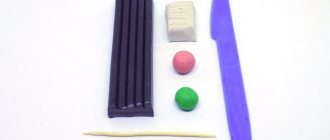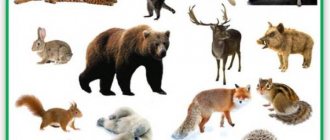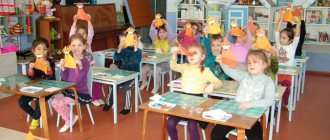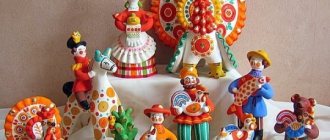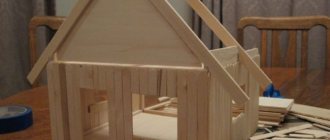Mental and personal development while sculpting
When doing sculpting step by step, do it in a fun and playful way. Create a story for the beast you create, and then act it out. Use ideas from fairy tales and cartoons, and act out stories from everyday life.
What do you need for a modeling lesson?
You need high-quality plasticine. For kids, choose very soft plasticine. If it is difficult for the baby to sculpt awkwardly, then his interest in such an activity will quickly pass.
Tools for modeling from plasticine:
- modeling board;
- stacks;
- rolling pins, including those with patterns;
- molds for modeling.
How to teach children to sculpt?
Many parents think that children will begin to sculpt and develop on their own. This is wrong. You will need to be shown how to do it, go through basic lessons. In the future, the child will come up with his own characters, but initially show him how to do it.
Learn how to sculpt basic shapes:
- ball;
- egg (ellipsoid);
- hemisphere;
- cake;
- sausage;
- cylinder;
- cone;
- brick;
- tourniquet;
- spiral.
After this, mold the figures step by step. Choose an interesting animal and make it together. Help the child, praise him!
Modeling in this age group usually takes no more than 20 minutes.
OOD progress.
The teacher takes out a book with Russian folk tales and asks the children what literary works are in this book. The teacher invites the children to find out which of them is the best expert on fairy tales .
There is a mini-quiz on fairy tales :
*Don't eat me, I'll sing you a song.
*Beautiful maiden, get into one of my ears and get out of the other, everything will work out...
*I left my grandmother. And he left his grandfather...
*And she shed her frog skin and turned into a red maiden, Vasilisa the Wise...
*The mouse ran and waved its tail...
*He pulls, he pulls, he can’t pull it out...
*Spring has come - the fox’s hut has melted...
*The fox carries me over dark forests, over fast rivers, over high mountains...
likes which fairy-tale hero to create their own favorite fairy-tale characters .
After this, the children and the teacher discuss what materials can be used to sculpt the figures and the teacher asks whether the children would like to sculpt from dough or plasticine.
The teacher conducts physical exercises:
Grandfather planted a turnip (sit down and stand up)
Large and strong (draw a large circle with your hands)
Grandfather pulls and pulls a turnip (imitation of pulling a turnip)
Yes, it’s almost lunch (look at your wrist as if at a watch)
Grandfather couldn’t bear it anymore (wipes sweat from his forehead)
Who can help? (raises shoulders)
Grandmother and granddaughter, (draw a handkerchief with your hands)
Cat and Bug (show ears)
And also the baby - (make paws and run on tiptoes)
Children sculpt their own figures of fairy-tale characters . Sometimes they turn to a teacher for advice. The teacher makes sure that everyone is sculpting and inventing and remembering. Those who find it difficult are helped with advice and demonstration of sculpting .
At the end, all works are put on display. Children admire a variety of products. Evaluate their implementation. Note attention, perseverance, accuracy when performing work. Praise children for their creative work.
Didactic game “Castle for fairy-tale heroes” for children 4–7 years old Didactic games for children are very important, because the child learns new things and gets to know the world through the game, and the more interesting and exciting it is. Photo report on the use of fairy-tale characters in the direct educational activity “Little Goats” What does play mean for three-year-old children? The game is his life! It is in play that a child develops. If we do the usual with our children. Abstract of the GCD for modeling “My kindergarten” in the senior group Program content. Strengthen children's ability to sculpt a human figure, conveying the shape, structure and size of the parts. Learn to convey simple ones. Summary of OOD on modeling in the senior group “Football” OOD on modeling in the senior group “Football” Objectives: To form a conscious attitude towards health in children, to form visual skills in preschoolers. Decorating the site using figures of fairy-tale characters Every year, for the summer period, we try to update the site in the kindergarten. Last year's work was published on Daria Trefilova's page. Master class on making “Strands for fairy-tale heroes” Master class on making “Strands for fairy-tale heroes” Various events are often held in kindergartens. Not always possible to purchase. A miniature park of sculptures of Hoffmann's fairy-tale heroes. Photo sketches In Svetlogorsk, located on the Baltic Sea, there is a miniature park of sculptures based on the works of the great storyteller Ernst Amadeus.
GCD for modeling in the second junior group “Sculpting a fairy-tale hero” Purpose: 1. To develop fine motor skills of children’s fingers, memory, and thinking. 2. Promote the child’s speech development. 3. Cultivate attention.
Abstract of OOD on sculpting in the senior group “Flowers” Purpose: to teach children to sculpt plants and insects of their choice, conveying the characteristic features of their structure and color. Form communication skills.
Development of children's creativity in drawing through images of fairy-tale characters The main goal of the work: the development of a child's creativity in visual activity through a fairy tale, a fairy-tale image, its creative embodiment.
Source
Abstract of the OOD topic “Make whatever animal you want.”
Abstract of the OOD topic “Make whatever animal you want.”
Purpose: To strengthen children’s ability to sculpt an animal (optional).
Tasks:
- learn to sculpt round and elongated objects, more accurately conveying the characteristic features of the object;
— improve techniques for rolling out plasticine with straight and circular movements of the palms;
- consolidate sculpting techniques and connecting parts;
— develop the ability to carefully handle materials and equipment;
- cultivate imagination and creativity.
Materials and equipment: toy animals (bear, hare, duck, chicken, etc., color illustrations, plasticine, modeling boards, recordings of Mozart’s sonnets.
Preliminary work: reading fairy tales and riddles about animals, watching birds on a walk, feeding the birds.
Methodical techniques:
- looking at toy animals;
- repetition of rolling movements in the air;
- looking at ready-made animals and writing a fairy tale about them.
Planned results: children participate in a joint conversation, answer the teacher’s questions, take part in productive activities, in a play situation with Mishka.
OOD progress.
1. Org. moment.
Educator: Children, good morning! I suggest you go to the magical forest. To do this you need to say the magic words:
One, two, three, four - everyone closed their eyes together.
We turned around, circled around, and found ourselves in a clearing!
Open your eyes.
We found ourselves in a fairy-tale clearing. Who is this sitting in front of you? (Mishka) Hello Mishka! Tell me what you want to ask the guys.
Bear: I want a friend, kind and cheerful. Listen to the riddle here:
What kind of forest animal is this?
Stood up like a post under a pine tree,
And stands among the grass,
Are your ears bigger than your head?
Educator: Who is Mishka talking about? (about the hare). We know bunnies from different fairy tales. What kind of fairy tales are these, name them. (Kolobok, Fox and Hare, Teremok).
(Show illustrations).
Educator: I agree with you, Mishka, that Bunny will be a good friend to you - he is kind, he let Fox in when she had nowhere to live, did not eat Kolobok, and came to live in Teremok. How can you make such a friend for Mishka? Shall we try to make a Bunny? Guys, what body parts does a hare have?
Children: Head, tummy, ears, paws, tail.
Educator: Tell me, what shape is the hare’s body? (column) Head? (round)
Now we take the plasticine in our hands, knead it thoroughly, divide it into two parts - larger and smaller. How should you sculpt the body? You need to roll out a larger piece of plasticine with straight movements of your palms to make a sausage. Then, in a circular motion, roll out the second piece of plasticine, give it a round shape - this will be the head, attach it to the body.
Summary of GCD for modeling in the senior group on the topic: Fairy tales
Greeting “Friend” All the children gathered in a circle, I am your friend and you are my friend. Let's hold hands together and smile at each other! (Hold hands and look at each other with a smile)
.
Educator: Hello children, do you like fairy tales? And why? Who knows what a fairy tale is (Children's answers)
.
Educator: A fairy tale is a story about fictitious events, about something that does not happen in the world. Guys, do you know a lot of fairy tales? (Children's answers)
Now we'll check.
The teacher asks a riddle, and the children name a fairy tale. Educator: If Petya the simplicity had not looked out the window, the fox would not have carried him away into the dark forests. (“Cat, fox and rooster”)
The girl went into the hut and saw a table and three chairs.
She sat on every chair and ate Mishutka’s stew. (“Three Bears”)
A cunning cheat sent him to catch fish with his tail.
The tail froze, and as a result he was left without a tail. (“Sister Fox and the Wolf”)
The mother taught the children not to open the door to strangers, the children did not listen and ended up in the wolf’s mouth.
(“The Wolf and the Seven Little Goats”)
They both lived in the swamp, They went to each other to woo each other, But they could not agree, Stubbornness is also characteristic of birds.
(“Crane and Heron”) Educator: Well done, you guessed all the riddles. Do you have a favorite fairy tale and who is your favorite character in it? Why (children's answers)
. And now I suggest you mold your favorite hero from plasticine. But first, let's warm up
Physical exercise “Teremok” Our cheerful little tower: it is not low, not high. (stand on your toes, sit down)
In it, the frog jumps and jumps,
(jumps)
sparrow chirps,
(waves his arms)
the cockerel pulls his toe,
(walks in place with his knees high)
and the little bunny hops and hops.
(jumping in place)
The fly flaps its wings,
(running in place)
The mouse dances with a handkerchief.
(children dance)
The hedgehog closed the door lock, He is guarding the little house
(claps)
Educator: I suggest you create heroes from your favorite fairy tale. But first, let's remember what the heroes of fairy tales have (head, torso, paws, legs)
.
Educator: Where is the head, torso, paws, legs? (the head is at the top above the body, the paws are at the top on the sides of the body and the legs are at the bottom on the sides)
.
Educator: What is on your head? (ears at the top, eyes, nose and mouth at the front of the head)
.
Educator: Guys, let's now sit down at the table and remember who we should sculpt and what we need for sculpting? Educator: Today we will sculpt from plasticine (clay)
.
Who will we sculpt? Educator: How will we sculpt them? (in parts, sculptural, combined)
.
Educator: How many pieces will we divide the plasticine or clay into? (into 3 unequal pieces: large, smaller and very small)
.
Educator: What do we make from a large, smaller and very small piece? Show me in the air how you make the body? (roll the ball with circular movements between the palms, then roll it out a little with longitudinal movements, you will get a column - this is the body)
.
Educator: And from a smaller piece? (head)
.
Educator: What technique? (roll the ball between your palms in a circular motion, pull out the ears with two fingers, thumb and forefinger)
.
Educator: And from a small piece? (paws and legs)
.
Educator: What do we do next? (attach the paws, legs to the body and apply)
.
Children sculpt their own figures of fairy-tale characters. Sometimes they turn to a teacher for advice. The teacher makes sure that everyone is sculpting and inventing and remembering. Those who find it difficult are helped with advice and demonstration of sculpting techniques. Encourage independent searches for sculpting techniques to convey the characteristic features of a character. Explain to children that they can use sticks to stabilize their figures.
At the end, all works are put on display. Children admire a variety of products. Evaluate their implementation. Note attention, perseverance, accuracy when performing work. Praise children for their creative work.
Source
